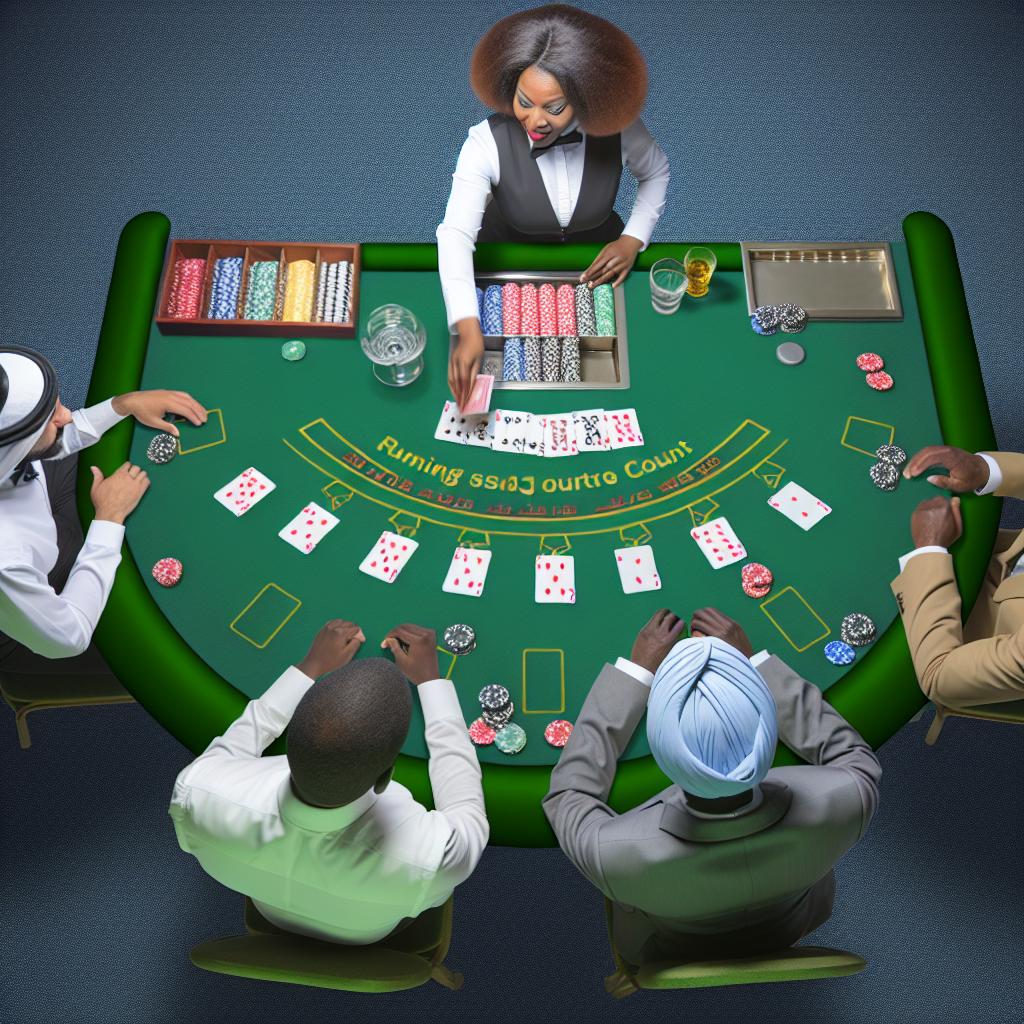The Basics of Card Counting
Card counting is a well-known strategy employed in the game of blackjack, with the primary objective of determining the likelihood of the next hand favoring either the player or the dealer. This method involves keeping a tally of the cards that have been dealt to estimate the probability of the remaining cards being beneficial to the player. The two most crucial components of this method are the running count and the true count.
Understanding the Running Count
The concept of the running count is central to card counting and serves as a basic indicator of what cards are likely left in the deck. Cards are assigned specific values to facilitate this counting process. In many conventional card counting systems, these values are typically assigned in the following manner:
- Cards from 2 to 6 are valued at +1.
- Cards from 7 to 9 are given a value of 0.
- Tens, face cards (Jack, Queen, King), and Aces are valued at -1.
As the cards are dealt, players adjust their running count in line with these values. A positive running count indicates that more high-value cards, which are advantageous for the player, are still in the deck. Conversely, a negative running count implies that a greater number of low-value cards remain.
Calculating the True Count
While the running count provides initial insights, the true count offers a more refined view, especially important in games with multiple decks. The true count is derived by adjusting the running count based on the number of decks left in play, and this adjustment helps in avoiding potential misjudgments that can arise in multi-deck games. The formula for calculating the true count is simple: divide the running count by the number of decks still remaining in the shoe.
For instance, suppose the running count stands at +6 and there are still 3 decks left in play. The true count would thus amount to +2, calculated as +6 divided by 3. Why is this conversion imperative? It allows players to make more informed betting decisions, accurately accounting for the dilution effect brought about by additional decks.
Applying the Counts in Strategy
An adept card counter must maintain both the running count and the true count throughout the gaming session. The true count serves as a vital guide for adjusting bets. A higher true count suggests better opportunities for the player and can result in increased betting. On the other hand, a lower true count, or a negative one, typically necessitates reducing bets or perhaps even stepping away from the table for a while.
The Importance of Practice and Subtlety
Mastering card counting is not an easy feat—it mandates persistent practice and the capacity to swiftly and discreetly perform calculations. Attracting attention from casino staff due to card counting could lead to being banned from the tables. This is because, although card counting is perfectly legal, it is often unwelcome in many casino circles. To refine and perfect one’s counting skills without the pressure of monetary loss, various training tools and interactive simulations are available for aspiring card counters.
In conclusion, understanding and applying the principles of both the running count and the true count are essential for successful card counting. By skillfully utilizing these techniques, players could potentially tilt the odds in their favor during a blackjack game. For those interested in delving deeper into the mathematical foundations and mechanics of these strategies, a vast repository of resources is available online to expand one’s comprehension of card counting.

